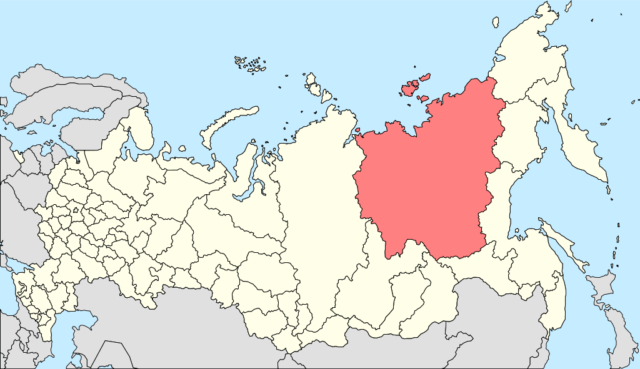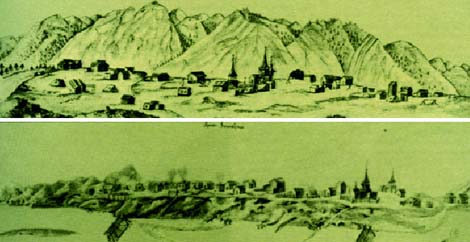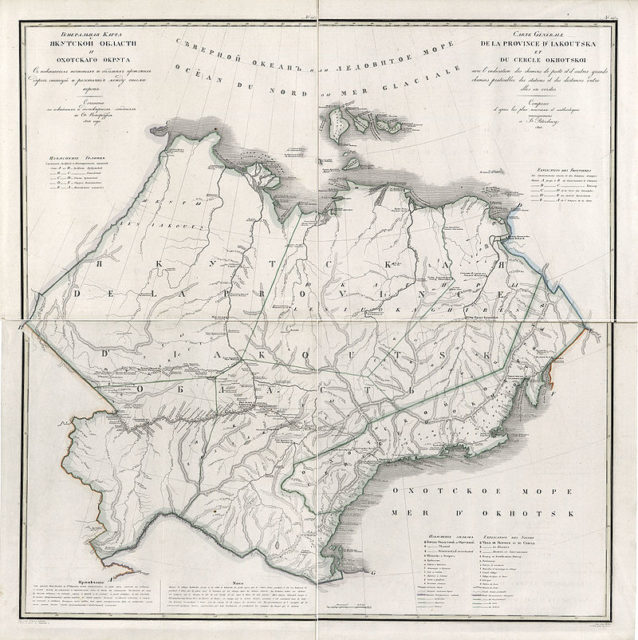This summer’s melting of the permafrost was more than three times greater than usual. It is now awakening deadly diseases, frozen from a long time ago.
Currently there are 24 people in Salekhard hospital, located on the Arctic Circle. It’s possible they contracted diseases from the potentially lethal anthrax in unfrozen reindeer or human burial sites. Though scientists have said that this is far from the only threat as climate change starts to grip Siberia.
Anthrax spores are already spreading on the Yamal peninsula, according to scientists. This should be a warning of the real risk of the return of the eradicated smallpox within the melting permafrost.
The melting is causing the erosion of river banks at the locations where victims were buried.

Back in the 1890s there was a major epidemic of smallpox. The ruins of Zashiverk town are evidence of the damage caused. This was a town where around 40% of the population had died.
Naturally, the corpses were buried under the upper layer of the permafrost soil on the banks of the Kolyma River. Now, more than 100 years later, the flood waters have started to erode the banks.
Specialists from the Novosibirsk-based Virology and Biotechnology Center have conducted research in the location, according to Sergey Netesov, who is the chief of the bionanotechnology, virology, and microbiology laboratory for the natural science department of the Novosibirsk State University.
The bodies they had studied showed sores like those caused by smallpox. While the virus was not found, some portions of it have been noted in DNA. A researcher says that this examination should go deeper into the burial sites to help clear things up.
Yamal’s role in the anthrax outbreak is now being studied. The developments should act as a warning, calling for a more serious attitude for preventive measures against these dangerous infections.
While the number of people being hospitalized with anthrax has been cut in half since Friday, two dozen people are still infected by this disease. 2,300 reindeer have also been killed. This Yamal outbreak is reason enough to finance research into the diagnostics and prevention of exceptionally hazardous infections.

There are thousands of cattle graves across Russia, and several of them are inside of the Arctic Circle. In the last month of July, this area has experienced the warmest temperatures on record, and they are still set to rise to 35C (95 F). Scientists have checked an old cattle grave and probed it to see if there are any disease spores left there.
Anthrax is a disease that has been known for centuries. The methods of effectively resisting it were devised several decades ago in the Russian Empire.
The burial locations of the infected animals had been fenced off to prevent any relapses, yet the anthrax spores are capable of lasting hundreds of years.
The region of Novosibirsk might see temperatures as low as 40 degrees Celsius below freezing in the months of winter, to as high as 40 degrees Celsius above zero in the summer.
With climates like that, wooden fences do not last long. Soon the abandoned pastures start to look appealing again, and at a certain point people would forget that these areas were not good for livestock.
Not all contaminated graveyards have been identified, and unknown cattle graves located in Russia might prove too numerous to count.
The permafrost soil spores are preserved extremely well until the warm weather arrives. The Arctic areas might face Siberian anthrax outbreaks over and over.
The depth of the thawing in Yakutia Russia is the largest in the region. It usually thaws up to 30 to 50 centimeters, but this year it has exceeded one meter, as stated by the director of the Permafrost Studies Institute, Mikihail Grigoriev.

The rock and soils that form the Yamal Peninsula contain a lot of ice. Thawing might loosen the soil very quickly, and the probability is very high that old cattle graves might come to the surface.
Some graves that had been dug up in the past might be just three meters deep. This thin layer of soil causes the spores of disease to be set loose even sooner.
Global warming is still an issue in the Arctic areas, and the climate change is three to four times faster there than in other regions. This phenomena is causing heavy flooding, says Professor Valery Malinin for the Russian State Hydrometeorolgical University in St. Petersburg.
Are parts of the world really succumbing to global warning? Will this uncovering of diseases spread any further than Siberia, perhaps around the world? Only scientists will know, and hopefully not leave it ignored.
